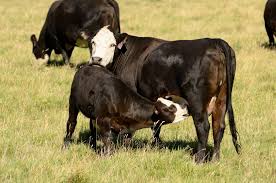Earlier on, it was established that agricultural insurance is a financial tool to transfer risks associated with farming to a third party via the payment of a premium that reflects the true long-term cost to the insurer for assuming those risks.
Agricultural insurance is a special line of property insurance applied to agricultural firms. The following sections provide more insights into agricultural risks and insurance.
Insurability of Risks
Not all risks are insurable. For a risk to be considered insurable, it must meet the following main criteria:
1. Estimable Probability of Loss: The probability of a loss in the future should be estimable. This is possible only if reliable data of past losses is available for a sufficiently long period.
2. Financial Estimation of Loss: The loss must be capable of being estimated in financial terms.
3. Medium Range Probability of Occurrence: The probability of occurrence needs to be within a medium range. If it is too high, the premium will not be affordable; if it is too low, it will not be possible to estimate the likely distribution accurately.
4. Limited Impact from Insured’s Behaviour: The occurrence of an event, or the damage it causes, should not be affected by the insured’s behaviour (moral hazard).
5. Independent Risks: To the extent possible, the risk should be an independent risk.
6. Fortuitous Character: The risk must be of a fortuitous nature.
7. Measurable in Large Numbers: The risk should be measurable across a large number of instances.
8. Affordable Premiums: The cost of insurance or premium should be within the means of the average farmer.
In line with these conditions for insurability of risk, measurable risks like death, fire losses, and accidents are insurable because the number of observations is large and randomly distributed.
Risks and uncertainties from natural hazards result in losses not only in the field but also during storage, packaging, and marketing of agricultural commodities. Pests, diseases, and parasitic attacks are common hazards that frequently occur on farms and result in a significant percentage of both field and post-harvest losses.
Pilferage is a social risk that farmers face at different stages of crop and livestock production. If substantial pilferage losses can be estimated in financial terms, they too become insurable.
Types of Agricultural Insurance

There are different types of agricultural insurance available in countries where agricultural insurance has developed. The three main types of insurance that all farmers should undertake include:
1. Property and Casualty Insurance: Crop insurance is an important type of property insurance. It is effective when used alongside marketing plans to reduce marketing risk. Crop insurance guarantees a level of production, thereby eliminating the risk of forward pricing or selling crops before they are produced. It ensures the tons of the product are available to deliver on a contract, even if the insured producer experiences a loss before harvest.
2. Health, Life, and Disability Insurance: Medical expenses resulting from serious illness or injury can have severe economic impacts on a farming family. Since farmers are more likely to be disabled than killed in accidents, a good disability policy is essential, alongside life insurance. It serves as a risk management tool.
3. Liability Insurance: A liability policy protects a farmer from claims or lawsuits brought by individuals whose property or person has allegedly been harmed by the farmer’s negligence.
Read Also: Poultry Disease Prevention and Management
Crop Insurance as a Risk Management Tool

Crop insurance is a mechanism to protect farmers against the uncertainties of crop production due to natural factors beyond the farmer’s control. It is also a financial mechanism that minimizes the uncertainty of loss in crop production by pooling most uncertainties that impact crop yields, so the burden of loss can be distributed.
Crop production involves numerous risks natural, social, economic, and personal. However, the principal characteristic that distinguishes crop production from any other activity is its great dependence on nature. Unlike other activities, crop production has to be carried out despite continual uncertainties arising from diverse natural and social elements.
Normally, the greatest impact of these elements falls on crops, which remain under the open skies for weeks and months. Uncertainty of crop yield is thus one of the basic risks that every farmer has to face, more or less, in all countries, whether developed or developing.
These risks are high in developing countries, particularly in the tropics, where most farmers are poor with extremely limited means and resources.
They cannot bear the risks of crop failure of a disastrous nature. It is true that much of the present uncertainty in crop production in developing countries like Nigeria could be reduced by technical measures and improvements in the social and institutional set-up. The need for a complete set of initiatives in this regard cannot be over-emphasised.
Still, a good deal of uncertainty will always remain, as no imaginable measure can make crop production completely independent of natural factors. Additionally, physical measures must be justified by their cost-benefit ratio.
There may be areas where flood prevention is possible, but the cost of preventive measures would far outweigh the benefits. In such cases, it would be bad economics to spend more capital in preventing a risk than would be lost from the risk itself, especially when capital is scarce.
With a growing population constantly pressing against the land, no part of it could be left uncultivated simply because it is subject to periodic risks of failure. It is in the country’s interest, as well as that of individual owners, that such lands remain under cultivation, even if occasional risks of failure occur.
Therefore, the risks of crop production must be faced. However, serious crop failures can have cascading effects, leading to serious repercussions for the entire community. Calamity relief provided by the government is a privilege, not a right, so farmers cannot always depend on it.
Besides, the Nigerian government’s response to farm-related risks often occurs only when the calamity affects a large number of farmers. A significant measure that is largely free from these difficulties is crop insurance against all natural and unavoidable hazards.
Read Also: The Ideal Instrument for Debeaking the Birds
Livestock Insurance as a Risk Management Tool

Livestock insurance is defined as a contract in which the insurer agrees to indemnify the insured against losses sustained due to injury or death of livestock caused by specific perils, or a contract to pay a sum of money if an animal dies from disease or accident.
The livestock industry is subject to pest and disease outbreaks, which often lead to significant losses for farmers. A recent experience among poultry farmers in Nigeria was the outbreak of avian flu, which resulted in the loss of a large number of birds and significant financial losses. Disaster relief was provided to the poultry farmers amounting to 631 million naira.
Sometimes, risks may be specific to a farm or local area and may not attract national disaster relief. To combat such risks, farmers need livestock insurance for protection.
Livestock insurance assists farmers who lose their animals due to severe drought conditions, pest outbreaks, and diseases by providing monetary compensation, enabling them to restock faster, invest in other productive activities, or purchase food and other necessities.
Livestock insurance also protects pastoralists against the full impact of drought-related losses. An insurance program encourages productivity and returns from livestock-based livelihoods.
Do you have any questions, suggestions, or contributions? If so, please feel free to use the comment box below to share your thoughts. We also encourage you to kindly share this information with others who might benefit from it. Since we can’t reach everyone at once, we truly appreciate your help in spreading the word. Thank you so much for your support and for sharing!
Read Also: Importance and Need for Financial Literacy (Financial Education)

